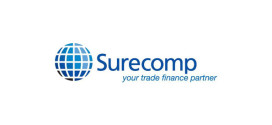
The Basel Committee believes that a simple, non-risk based ‘backstop’ measure will restrict the build-up of excessive leverage in the banking sector to avoid destabilising
An underlying cause of the global financial crisis was the build-up of excessive on-and-off- balance-sheet leverage in the banking system, according to the Basel Committee. It said that “in many cases banks built up excessive leverage while apparently maintaining strong risk-based capital ratios.
“But, at the height of the crisis, financial markets forced the banking sector to reduce its leverage in a manner that amplified downward pressures on asset prices. This de-leveraging process exacerbated the feedback loop between losses, falling bank capital and shrinking credit availability”.
The result of this was the Basel III framework, which introduced a simple, transparent, non-risk based leverage ratio to act as a credible supplementary measure to the risk-based capital requirements.
This was intended to:
- restrict the build-up of leverage in the banking sector to avoid destabilising de-leveraging processes that could damage the broader financial system and the economy
- reinforce the risk-based requirements with a simple, non-risk based “backstop” measure.
Now, early this year, the Basel Committee has issued the full text of Basel lll’s leverage ratio framework and disclosure requirements following endorsement by its governing body, the Group of Central Bank Governors and Heads of Supervision (GHOS).
It reiterates that a simple leverage ratio framework is critical and complementary to the risk-based capital framework that will help ensure broad and adequate capture of both the on-and-off-balance-sheet sources of banks’ leverage.
Basel III’s leverage ratio is defined as the “capital measure” (the numerator) divided by the “exposure measure” (the denominator) and is expressed as a percentage. The capital measure is currently defined as Tier 1 capital and the minimum leverage ratio is three per cent.
The committee will continue to monitor banks’ leverage ratio data on a semi-annual basis in order to assess whether the design and calibration of a minimum Tier 1 leverage ratio of three per cent is appropriate over a full credit cycle and for different types of business models. It will also continue to collect data to track the impact of using either Common Equity Tier 1 (CET1) or total regulatory capital as the capital measure.
To put this into perspective, a consultative version of the leverage ratio framework and disclosure requirements was published in June 2013. After carefully considering comments received and thoroughly analysing bank data to assess potential impact, the committee adopted a package of amendments, which pertains to the leverage ratio’s exposure measure.
Thereafter, the committee thanked those who provided feedback and comments as, it says, “these were instrumental in revising and finalising the leverage ratio standard”.
The technical modifications to the June 2013 proposals relate to:
Securities financing transactions (SFTs). SFTs include transactions such as repos and reverse repos. The final standard now allows limited netting with the same counterparty to reduce the leverage ratio’s exposure measure, where specific conditions are met
Off-balance sheet items. Instead of using a uniform 100% credit conversion factor (CCF), which converts an off-balance sheet exposure to an on-balance sheet equivalent, the leverage ratio will use the same CCFs that are used in the Basel framework’s Standardised Approach for credit risk under the risk-based requirements, subject to a floor of 10 per cent
Cash variation margin. Cash variation margin associated with derivative exposures may be used to reduce the leverage ratio’s exposure measure, provided specific conditions are met
Central clearing. To avoid double-counting of exposures, a clearing member’s trade exposures to qualifying central counterparties (QCCPs) associated with client-cleared derivatives transactions may be excluded when the clearing member does not guarantee the performance of a QCCP to its clients
Written credit derivatives. The effective notional amounts included in the exposure measure may be capped at the level of the maximum potential loss, and there will be some broadening of eligible offsetting hedges.
Implementation of the leverage ratio requirements has now begun with bank-level reporting to national supervisors of both the ratio and its components, and there will be public disclosure starting 1 January 2015.
The committee says it will carefully monitor the impact of these disclosure requirements and “any final adjustments to the definition and calibration of the leverage ratio will be made by 2017, with a view to migrating to a Pillar 1 (minimum capital requirements) treatment on 1 January 2018 based on appropriate review and calibration”.
The committee is also undertaking to monitor accounting standards and practices closely “to address any differences in national accounting frameworks that are material to the definition and calculation of the leverage ratio”.
Finally, the committee will continue to test a minimum requirement of three per cent for the leverage ratio during the parallel-run period (ie from 1 January 2013 to 1 January 2017).
Backing for Basel Committee action
Th e Basel lll leverage ratio revision has been applauded by BaFT-IFsa, the leading international transaction banking association, formed by the merger of the Bankers’ association for Finance and Trade (BaFT) and the International Financial services association (IFsa).
President and CeO Tod Burwell said, “We commend the Basel Committee for adopting the fi nal calibration of the Basel III leverage ratio, recognising how important trade fi nance is to economic growth. amendments on the treatment of off -balance sheet trade fi nance instruments recognise the intrinsically safe nature of these products and their importance to companies, consumers and job creation. Th rough this agreement, the Basel Committee has taken signifi cant steps to ensure trade fi nance remains available and aff ordable to importers and exporters.
“Th is is a positive outcome for the real economy, and we recommend that amendments supporting the growth of international trade be swift ly adopted in member jurisdictions around the world.”
 Cash And Trade Magazine For Cash and Trade professionals in the Middle East
Cash And Trade Magazine For Cash and Trade professionals in the Middle East




